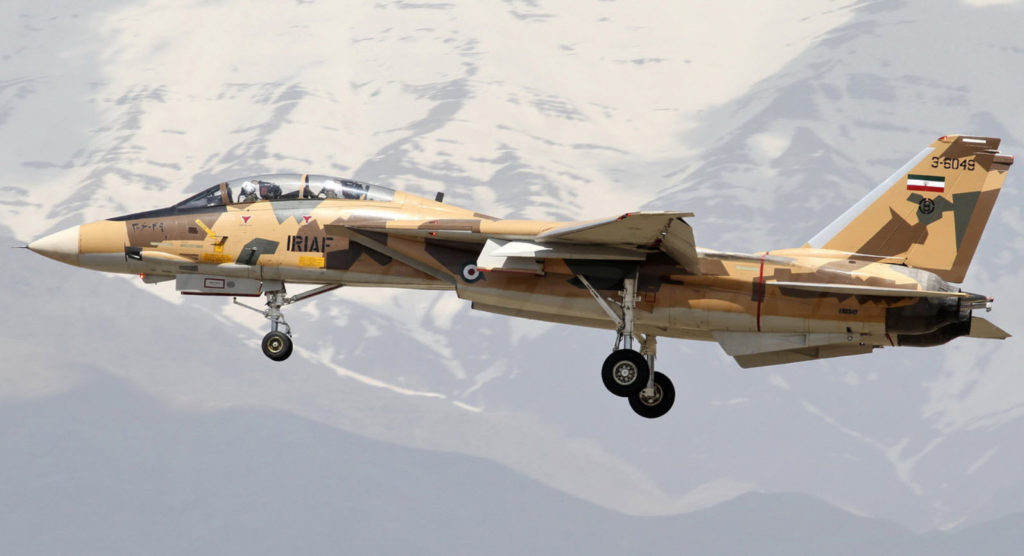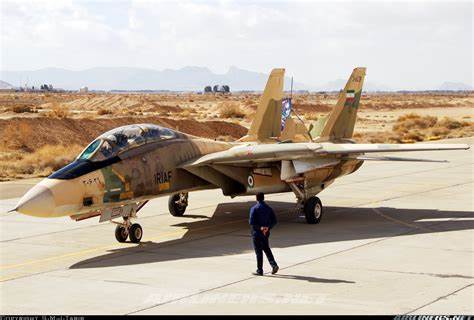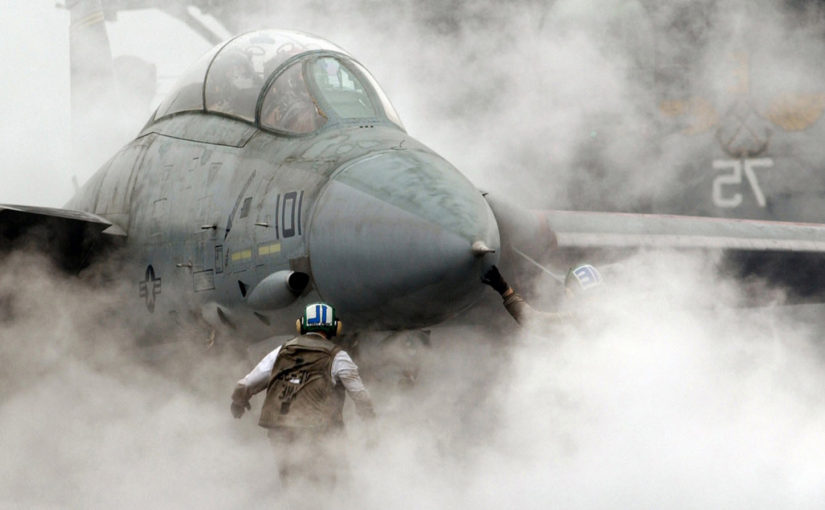Before the Iranian Revolution, which began in 1978, Iran was a steadfast U.S. ally. Consequently, the Iranian military arsenal was packed with American-made weapons. Iranian infantry carried M-16s; Iranian tankers drove M-60 Pattons; Iranian pilots flew F-4 Phantoms and F-14 Tomcats — a superb airframe, that was immortalized by the movie Top Gun.

Since that revolution, however, Iran has been barred from purchasing weapons or, more importantly, components and spare parts for its ageing military.
Successive ways of economic sanctions, moreover, have constricted the country’s military budget, thus making it more difficult to purchase new arms for those willing to sell (Russia and China, most notably).
The Iranians have confronted this restriction by either developing their own weapons or by scavenging the global arms market for spare parts and “smuggling them” into their country.
Iran still operates some Tomcats that are being modernized to extend their operative life. Domestic upgrades include avionics, weapons (R-73E, AIM-54A+“Fakkur”, AIM-54A, AIM-7E and AIM-9J are among the air to air missiles adapted to the aircraft’s fire control system) and color scheme: indeed the plane was give a three-tone Asian Minor II camouflage pattern resembling the one adopted by Russian 4th and 5th generation fighter planes and U.S. Aggressors. - The Aviationist
But despite Iran’s threat to the West through its sponsorship of terrorism, there are individuals who are unsurprisingly willing to put profit before security.
Alexander George, a British pensioner, was jailed for shipping F-4 and MiG parts to Iran, thus violating the American “Weapons of Mass Destruction” embargo. George utilized front companies, which he had established in both Dubai and Malaysia, to smuggle into Iran essential components for the Iranian Air Force’s ageing fleet.
In return, he made almost $7 million.
What is the role the Tomcat could play in a hypothetical war against Israel? As already explained in the blog post about the possible long range strike on Iran’s nuclear program, IRIAF interceptors, should play “hide and seek” with the enemy forces: they could hide from the incoming packages and try to achieve some kills during the egress phase. They could be effective by simply disturbing the strike packages to let them “feel” the threat and waste some gas. The Tomcats could somehow be effective against isolated targets, like drones, mainly before or after the first waves of air strikes: even a UAV kill could play a role in the psychological war against Israel. For sure, radar activation would be reduced to a minimum: during the most intense part of the air campaign their AWG-9 radar would be either jammed (although it was domestically modified or locally upgraded to make it more jamming-resistant) or detected as soon as switched on, with the latter hypothesis implying the risk of interception by enemy fighters. -The Aviationist

The 77-year-old received a two-and-a-half year sentence and has been disqualified from managing a company for nine years.
George had been working with a couple, Paul and Iris Attwater, who purchased used aircraft spare parts with dual-use — i.e., they could be used for both civilian and military aircraft — from the U.S.
They used their company, Pairs Aviation Limited, to avoid any suspicions.
According to “IRIAF 2010“, the book published by Harpia Publishing and written by Tom Cooper, Babak Taghvace and Liam F. Devlin, that I consider one of the most detailed sources about Iran’s Air Force, due to the lack of some spare parts, the fleet of more than 40 Tomcats is roughly divided into “airworthy” and “fully mission capable aircraft”. The first fly without primary weapon systems and/or no AWG-9 radar; the second can perform QRA (Quick Reaction Alert) and air defense missions. -The Aviationist
The British couple, then, sent the components to George’s front companies, which then smuggled them into Iran.
The Attwaters received a suspended six-month prison sentence for their involvement — they pleaded guilty, and that probably saved them from a severer sentence.
For their involvement, they made an estimated $650,000 profit.

“These three sold banned items that ended up in Iran. They didn’t care what these parts might be used for, as long as they got paid,” Simon York, the leading investigator of HM Revenue and Customs.
“This was a calculated and cynical attempt to undermine strict trade embargoes and internationally agreed controls. They knew the rules and weaved increasingly elaborate plans to stay under the radar,” added York.
Hence, although IRIAF officials have described the current fleet of F-14s as “completely overhauled” and “improved”, and referred to it a a “new generation of bombers” in the recent past, only a small amount of Tomcats can be used for air defense purposes in spite of the large amount of spare parts that Iran was able to clandestinely collect after the type was retired by the U.S. Navy and the efforts of various domestic companies to produce some specific parts and subsystems. -The Aviationist
George, however, denied the allegations and claimed that he instead shipped wheelbarrows, goggles, and gloves for the construction industry.
Iran hasn’t been the only nation to try and circumvent international embargoes. Israel faced a similar conundrum back in the 1960s-1970s. The French government had imposed an arms embargo. Nonetheless, the Israeli government and the Israel Aerospace Industries worked with Dassault, a French aerospace company, to produce an Israeli variant of the Mirage 5 fighter jet. The jet proved a great success, accounting for more than 100 kills in the 1973 Yom Kippur war.
If you liked this article, you can read similar articles by viewing the master index for this class here;
Life & HappinessArticles & Links
You’ll not find any big banners or popups here talking about cookies and privacy notices. There are no ads on this site (aside from the hosting ads – a necessary evil). Functionally and fundamentally, I just don’t make money off of this blog. It is NOT monetized. Finally, I don’t track you because I just don’t care to.
- You can start reading the articles by going HERE.
- You can visit the Index Page HERE to explore by article subject.
- You can also ask the author some questions. You can go HERE to find out how to go about this.
- You can find out more about the author HERE.
- If you have concerns or complaints, you can go HERE.
- If you want to make a donation, you can go HERE.


